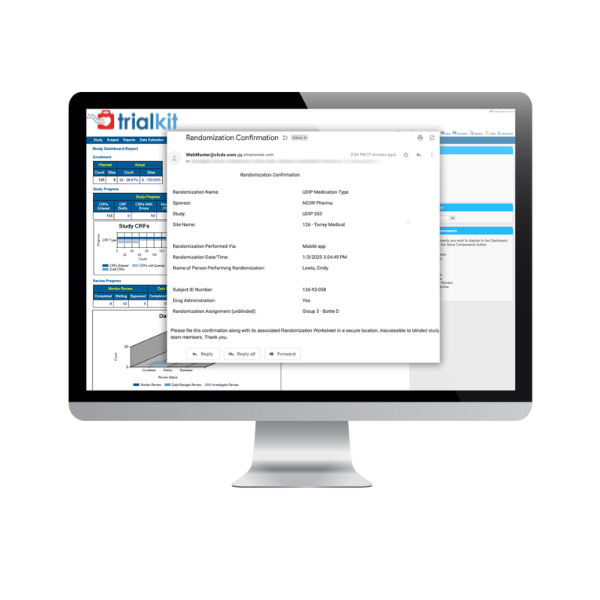Randomization and Trial Supply Management (RTSM)
A low‑risk, ultra‑efficient way to manage patient randomization and investigational product (IP) supply—fully unified within the TrialKit platform.



What Is RTSM?
RTSM (Randomization and Trial Supply Management, sometimes also called IRT) is a combined technology solution that manages both (1) randomization of participants into treatment arms, and (2) the planning, distribution, tracking, and re‑supply of clinical trial inventory (investigational products, kits, and supplies).
In short:
– Randomization ensures participants are assigned to treatment arms in a statistically unbiased, blinded, or stratified manner.
– Trial Supply Management (TSM) ensures the right product, dose, and quantities get to the right site/participant at the right time—managing inventory, expiration, returns, and repacking.
RTSM is the modern evolution of earlier interactive response systems (IVRS, IWRS, IRT). The shift toward RTSM underscores how randomization and drug supply logic must work tightly together in today’s trials.

Challenges and Considerations in RTSM Adoption
Managing randomization and trial supply logistics in clinical research comes with a complex set of variables. From protocol design and supply reorders to regulatory oversight and global coordination, trial teams face several persistent hurdles:
- Complex protocol designs: Adaptive studies and stratified arms require advanced logic and version control.
- EDC, lab, and supply chain integration: Real-time, bidirectional data exchange is essential across platforms and vendors.
- Regulatory validation and audit readiness: Every customization and workflow must be documented, validated, and audit-ready.
- Global logistics and supply constraints: Shipping delays, customs clearance, cold chain requirements, and site-level storage must be anticipated and managed.
- Change control: Protocol amendments or supply logic updates mid-study require careful implementation without disrupting ongoing activities.
TrialKit RTSM addresses these challenges through flexible, protocol‑driven configuration, full audit and validation capabilities, and tight alignment with the unified TrialKit platform.
Why Choose TrialKit RTSM?
Save precious time on complex randomization activities and trial supply management with one login. TrialKit RTSM accommodates even the most complex randomization strategies for studies of all sizes. TrialKit’s drag-and-drop design tool allows you to make mid-study changes without disruption.
Randomize your way
Quickly and accurately randomize by any trigger event, randomize multiple times per study, and perform blinded or unblinded randomization. Configure and reconfigure at any time.
Run flexible study designs
TrialKit’s flexible architecture enables you to modify the protocol as the trial unfolds. No waiting for tech support. Address your patients’ unmet needs faster.
Dial in your inventory
Lower your risk of over- or undersupplying your sites with investigational product (IP) and other clinical trial supplies for substantial cost savings. Automatically trigger site shipments according to defined criteria and dosing schedules.
Full visibility, automatically
Set up automated workflows and get complete visibility into participant data. TrialKit randomization and trial supply management operates seamlessly with TrialKit EDC.
Inventory insights
Never miss a beat with full drug history reviews, inventory disposition, distribution trends, site audits and other reports. Complex dosing schedules may benefit from patient- or site-specific reports.
How It Works
When a site is activated, the system picks inventory items based on the predefined site ceiling.
The distributor and site are notified of the items to expect, their lot, item number, and expiration date.
The system informs the distributor to ship the allotted items to the site.
When the items are received, the site logs their receipt in the system.
These items become available for study participants.
When site inventory hits the predetermined floor level, the product is automatically reordered based on the inventory available at the distribution center.

